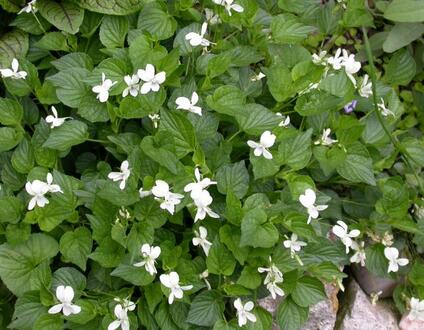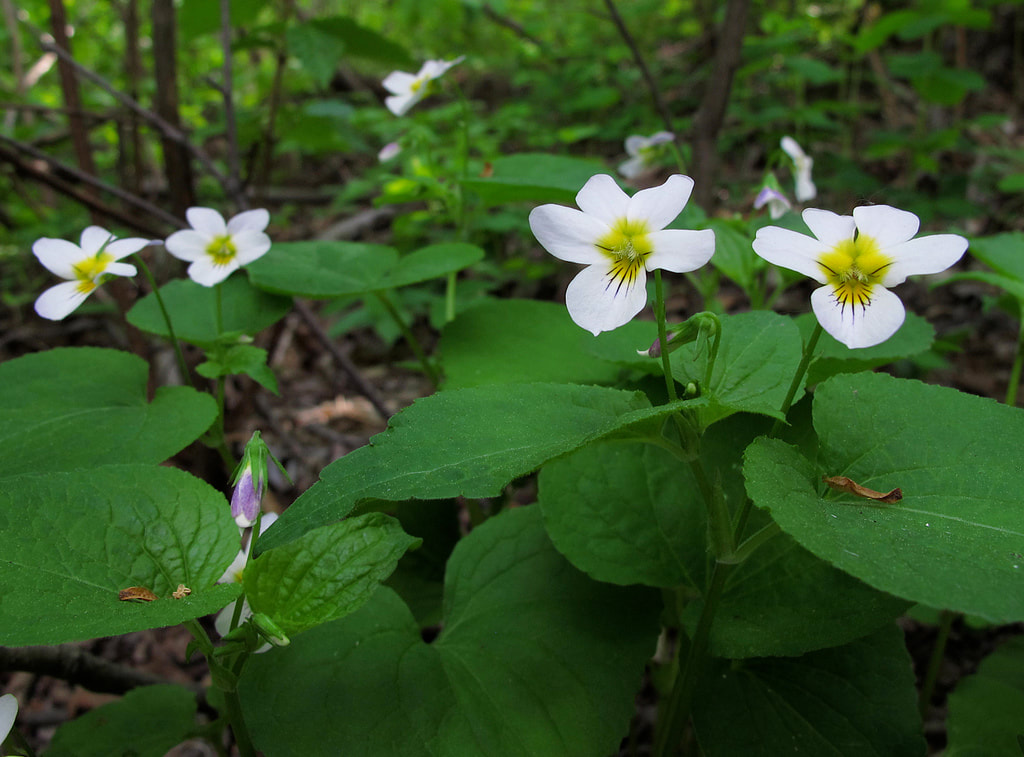Striped Cream Violet
Viola striata
Pale Violet is a native wildflower found in moist to wet areas of low woods, meadows, ditches, woodland borders, and stream banks. It freely self-seeds and spreads into cluster-like colonies. It does not spread by runners. It prefers light shade to partial sun, moist to mesic conditions, and rich loamy soil. This species doesn't invade lawns and is relatively easy to cultivate in gardens. It will form a groundcover in naturalized and woodland areas. The creamy-white blooms are long-lasting and are produced from May to June.
On average, Viola striata has a longer blooming period than other violas. It is also the only viola that has leafy stipules, which are a small leaf like part of a leaf, typically in pairs at the base of the leaf stalk. Other distinguishing characteristics are its irregular cleft stipules and the bearded lateral petals.
The spreading habit and self seeding trait makes this plant a great choice for a ground cover. The seeds are also distributed by ants due to the oily coatings of the seeds.

